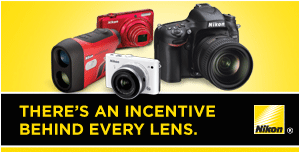The Right Information at the Right Time: Making Sense of Engagement Communication
The world has changed radically, not only in terms of communication channels and choices, but also in the amount of clutter organizations must overcome in order to break through
One of the most important and overlooked components of incentive and recognition program implementation is communication. In order to maximize engagement, research indicates that communication is one of a half-dozen or so elements critical to improving performance through people – along with assessment, goal-setting, learning strategies, collaboration, rewards & recognition and measurement.
Too often, organizations place too much focus on the reward and not enough on other critical components. You have a greater chance of turning a traditional incentive and recognition effort into a successful engagement program by incorporating all of the elements that connect engagement to performance.
Thanks to rapid changes in technology and wide variations on how people of different “workplace generations” interact today, the issue of communication has become more complicated than ever before. That said, it has also become far less expensive than in the past. The cost of almost everything related to communications – the Internet, email, social networking, printing, videos, meetings, promotional products, etc. – has gone down, not up, over the last decade.
Depending on your program’s target audience – external customers, channel partners, internal employees, suppliers – you’ll face numerous obstacles just getting people to engage with your various communications. Obviously, the challenge is greatest with external audiences – particularly non-customers or barely engaged distribution partners – who have little reason to listen unless your organization has something compelling to say and you manage to reach them. Communicating with customers is a little easier because they’ve bought something, and easier still with employees and vendors because they depend on your organization for employment or business.
Critical Questions
Here are the big questions to ask before implementing a communication strategy for your incentive recognition, or engagement program.
- What are the program objectives and how will your communication strategy and tactics affect results?
- Who is the audience? Is it consumers, channel partners, employees, vendors, your community, or all of the above? What are their demographics in terms of age and education? What are the most likely ways to reach them in terms of media?
- What do you need to communicate? What does the individual need to know in order to accomplish the desired goal? What information will make them receptive to your communications?
- How will you communicate? Based on the answers to the first set of questions above, and your organization’s resources, what media make sense?
- How will you assess results? What types of surveys or tests will you employ to identify the impact of your communication strategy?
Basic Principles
Of course, it’s one thing to communicate; it’s another to make it so that people internalize your messages and apply them to whatever activity you’re seeking to engage them in. Here are some basic principles of communication that apply to all engagement, rewards & recognition and incentive programs.
- Have a plan. Develop a written strategic plan that is part of your overall incentive, recognition, or engagement business plan. Clearly state the connection between the communication strategy/tactics and the desired goals/objectives.
- Assess and reassess. Use surveys or tests to benchmark knowledge or interest levels periodically throughout your campaign.
- Understand your audience. What is the best way to communicate with them, by age group or demographic. Certain groups respond to and interact with Facebook, others prefer email, still others prefer mobile communication. Know who you’re trying to reach.
- Look for inter-relationships. Identify connections between various external and internal audiences to foster greater alignment of messaging.
- Keep it simple. Distill the message to the information people need to know.
- Be quick. Say it in as few words/characters as possible.
- Make it win-win. Make clear the benefits of engaging in your communications.
- Inform, don’t just sell. Find ways to provide information in a way that helps people grow in some capacity…that makes them a better consumer, channel partner, employee, or vendor.
- Build trust. Tell the truth. Be as candid as possible.
- Encourage dialog. Within reason, give people the opportunity to comment or share information. Increasingly, the most effective communication is two-way.
- Use humor, but with care. Mix in an element of humor, as long as it is at no one’s expense and reinforces the message rather than distracts people.
- Integrate your communications. If you’re using multiple media, make sure your messaging is coordinated and reinforced across all of your efforts.
- Repeat messages over time. Don’t assume people have absorbed your message on the first encounter. Carefully, and respectfully, repeat key messages during your campaign.
- Respect permissions. If you’re dealing with external audiences especially, respect requests to opt-out. If people say they don’t want to hear from you, they probably don’t.
- Understand the media. Incentive, recognition and engagement strategies employ a different set of media from traditional advertising and marketing. Below you’ll find a list of communications tactics.
Generational Issues
It’s tempting for the sake of simplicity to put people into generational “buckets,” especially in this era of social networking and mobile applications. But that can sometimes lead to dangerous assumptions. It’s best to keep an open mind as to how people best like to communicate, not only via media, but in terms of tone.
That said, it’s important to note a sea change in communication that has occurred as a result of the Internet and social networking which has shifted the power from the communicator to the recipient of communication. People can now more closely control from whom and how they wish to receive communications, and they can call out or rally behind organizations in a way that has effectively leveled the communication playing field.
This shift of power to the consumers of information – be they external or internal audiences – has forced organizations to:
- Apply a higher level of candor and truthfulness to communications
- Use information to inform instead of always selling
- Provide people the power to respond and share in a productive way
- Identify the ways that different people in your organization wish to communicate, based on what is most convenient to them. For some, posters in the lunch room still make sense.
Talking Tactics
One of the big risks in communication is getting too focused on the tactics rather than how those tactics best work together. Here’s a quick refresher of the different forms of communication that can be applied in an incentive, recognition, or engagement program – with a warning to make sure whatever your choices are to keep it simple, informative, honest and open.
Electronic Communication
While there remain many audiences with relatively little time to spend online, the Internet has transformed the process of implementing incentive, recognition and engagement programs.
- The Internet. In most cases, the Internet has replaced print as the fundamental medium for incentive, recognition and engagement programs. An Engagement Portal integrates all of the key elements of a program on one platform, including communications, learning, assessment, collaboration, innovation, rewards and measurement. The Internet makes it possible to take an “enterprise” approach to your program so you can track the results against the level of participation in all of the program’s features. One portal, based on log-ins, can accommodate an infinite number of programs and audiences and all of the elements involved with incentives, recognition and engagement.
- Social networking. Depending on whether your audience is external or internal, you may wish to use a public-facing systems like Facebook, LinkedIn or Twitter (or internal systems such as Yammer) to foster a two-way dialog, understanding the potential risks and rewards. Some solutions allow you to more carefully moderate the discussion than others so you can suppress the messages from “crackpots or gadflies.”
- Mobile applications. Based on the wide use of smart phones and almost universal acceptance that work has permanently permeated personal life, mobile-friendly communications make sense in many cases based on doing a careful cost-benefit analysis, since a truly customized mobile application isn’t cheap or trivial.
- Videos. Combining low cost, ease of production, potential for high impact and ease of distribution, videos offer a more powerful solution than ever before.
- Surveys. Although technically an assessment tool, surveys are critical to effective communications by providing a useful before-and-after picture.
Print
With the amount of electronic clutter bombarding the average consumer these days and a large contingent of highly mobile workers with little time for regular Internet use, print remains a critical part of an integrated communications strategy.
- Enrollment kits, catalogs newsletters. Such print materials aimed at targeted audiences and mailed to the home can still have high impact. Young people still subscribe in the tens of millions to print magazines and will read and retain relevant printed materials. (Just look at your teenager’s bedroom.)
- Posters. People still go to the water cooler and sit down in lunch rooms all across the U.S. A few key words and images can help reinforce critical messages.
Digital
- Digital printing. Today, many printers offer integrated digital solutions that bring the print media format to life on tablets and smart phones.
- Kiosks and signage. Technology has transformed the impact and lowered the cost of point-of-sale or point-of-contact marketing.
Face to Face
No media matches the power of getting in front of or, better yet, mingling with your target audience, either individually or in groups.
- One on one. Make sure your managers have a key understanding of the essential communication elements of the program.
- Meetings. Consider kick-off events or “town hall” meetings, followed by an opportunity to mingle informally. Make sure there’s plenty of opportunity for two-way communication. Look at how key messaging can be reinforced at routine training or other types of meetings.
- Incentive trips. Memorable experiences are the most powerful way for people to absorb key messaging, as well as to communicate to everyone in the organization the values and actions that help drive success.
Three-Dimensional Communication
Never overlook the potential for the right items to help convey a message, express appreciation, and add a little fun to the workplace.
- Promotional products. Imprinted items that reinforce the program’s message, theme and rewards are a great way to maintain interest and boost participation.
Subscription Center
Subscribe to Engagement Strategies Magazine
Update Your Subscriptions





.jpg)

Comments
Show: Newest | Oldest
Post a Comment